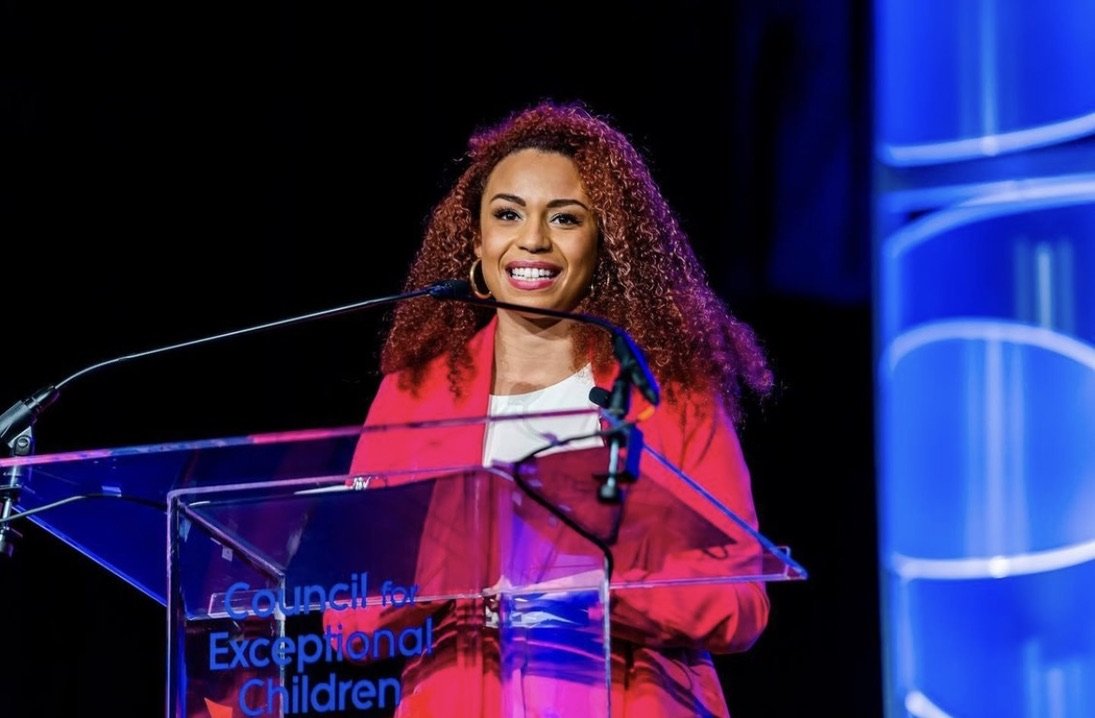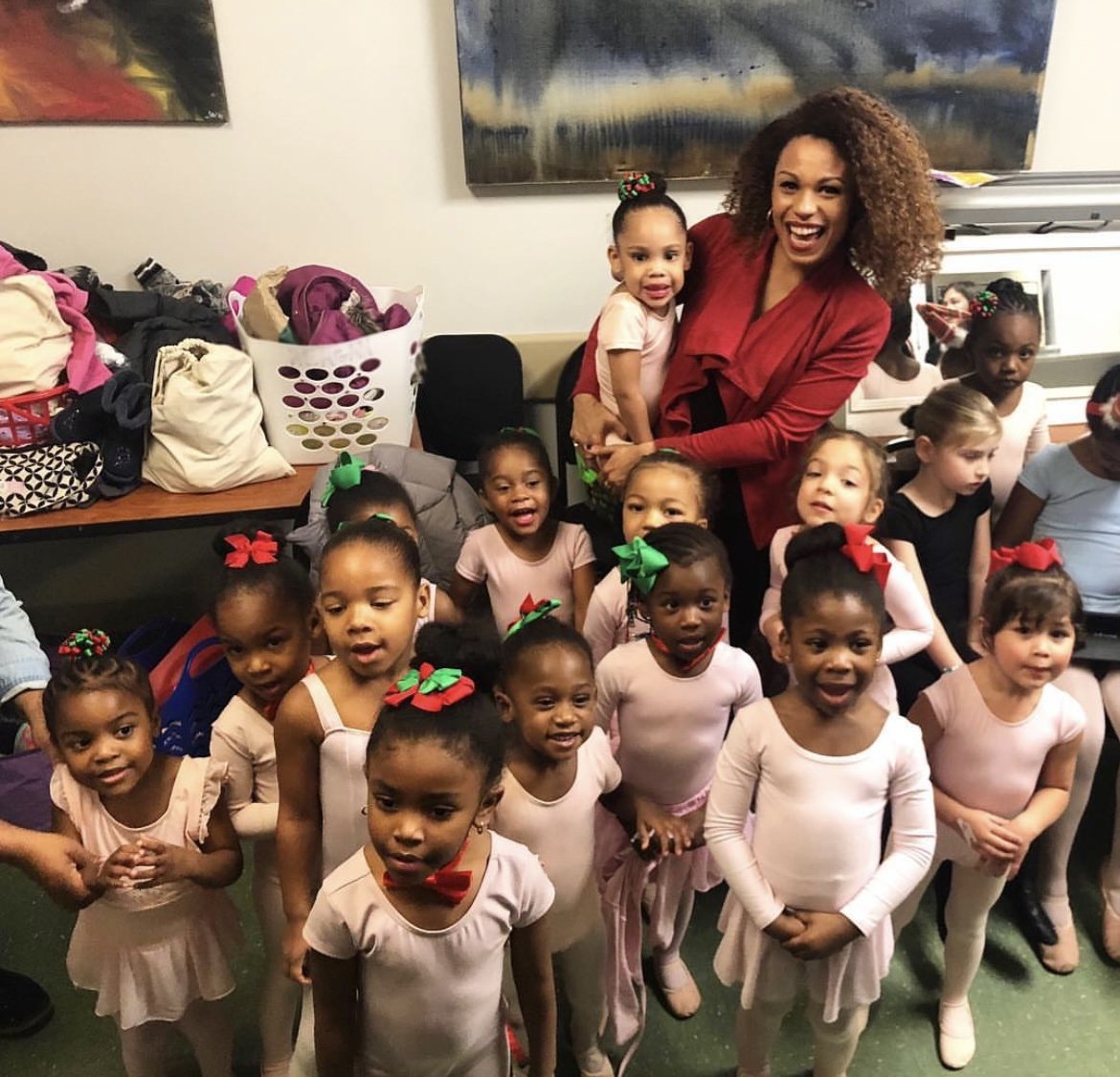Interview with Cierra Kaler-Jones
Q&A with our CMI Dance Company member, philanthropist, and entrepreneur Cierra Kaler-Jones
You are a talented dancer, writer and founder of Unlock your story and social justice educator among just a FEW of your credits within your bio. Tell CMI about these journeys — What has your dance experience been and how has that made you who you are today?
Thank you so much! I started taking dance classes at 5 years old at my local dance studio where I grew up in Galloway, New Jersey. I trained in ballet, jazz, hip hop, lyrical, musical theatre, and tap. I was introduced to modern and contemporary when accepted into my high school dance program and company. While in college, I was a member of the Rutgers University Dance Team and competed on the jazz and pom teams at UDA College Nationals, in addition to all home football and basketball games. This set the stage for me to dance professionally in the NBA with the Washington Wizards for two seasons. This is my second season as a technical company member with Capitol Movement. I've been honored to be cast in performances choreographed by Capitol Movement company members, including Margaux Lieser's pieces Shockwave and I've Seen Love Conquer in NACHMO DC, and Patrick Leonardo Casimir's dance concert Evolution of Inner. I've also taught dance for about 12 years – from babies as young as 2 to adults. I'm currently an instructor at AVA Dance Company and Woodbridge Academy of Dance.
All of these experiences shaped me. Dance has always been a constant in my life. It's been my tool for speaking my truth and gives vocabulary for emotions I can't quite put into words. For me, there is no feeling in the world greater than being able to tell a story through combined eight counts of rhythmic movement. It's taught me the power of perseverance, to show up for myself and the process despite setbacks and fatigue. It's taught me to be present in the moment, and to honor myself and my artistry as a work-in-progress.
When did you first determine writing was your passion and how do you want to impact others with your writing?
Ever since I can remember, I’ve been enraptured by stories and words. As a child, I spent a lot of time looking up words in the thesaurus, trying to figure out how to fully capture what I wanted to say. I loved reading and was always engrossed in a book. I wanted to tell stories like the ones I read – stories where I felt seen and where experiences could be put into words. I used to scribble stories and poems in my notebooks, and as I got older, I found myself drawn to writing as a tool to create change. Now, I support others in telling their own stories – as a professor, I teach a class on storytelling for change; in my full-time role, I support educators in writing their stories; and as a coach, I help women who seek to share their stories. I believe that with stories, we can create fuller, deeper, and richer connections and in turn, a more radically empathetic and just world.
Social justice education- how are you advocating for this and how does that mesh with Capitol Movement?
My work in education advocacy and activism started in high school when I organized with community members to have our school board reinstate funding for arts programs. This aligns with Capitol Movement's work to provide quality dance education and make dance accessible and affordable. Much of my work involves ensuring students have access to an antiracist, liberatory, joyful, creative curriculum that encourages critical thinking. This includes everything from advocating for/pushing back against policies to writing lessons to facilitating programs that support students' advocacy and organizing. Dance and arts education allows students to be creative, express joy, and use their movement to make statements about their experiences and the world around them.
Can you tell us more about your research on black girls using arts-based practices to build strength, wellness and identity?
When I started teaching dance, students would come to my class after school and ask me questions like, "Ms. Cierra, can we learn Black history at dance because we don't really learn it at school?" and "Ms. Cierra, can we talk about current events because I want to figure out what I can do to make a change?" From their questions, we started to experiment with building our own curriculum. I asked them what they wanted to learn, and we started to incorporate mini-lessons into our company rehearsals. At the time, I was working for the federal government during the day and noticed that much of the research I was reading didn't highlight Black girls' opinions about what schooling should look like. So, my research asks Black girls about the stories they want to share about who they are, what they want to see in school, and how they use art and activism to make those changes.
Tell us about Black Girls S.O.A.R - how you founded it, growth and status of your 8 Co-researchers and projects worked on.
Black Girls S.O.A.R. (Scholarship, Organizing, Arts, Resistance) is the foundation of my research. It came from the aforementioned experience and was the program I co-created with high school-aged Black girls in D.C. as part of my dissertation. Black Girls S.O.A.R is a community-based program in the D.C. Metro Area that supports Black girls in using art and research to change school curriculum and pedagogy. We do this by hosting research training for Black girls. Throughout the program, they collect and analyze data about a topic that interests them, and they turn the data into artwork that they present to an audience. Over the past three years, we've supported two cohorts and 16 co-researchers. A colleague and I just submitted a few proposals to try to get funding for the program's third cohort.
Rethinking Schools publication - WOW! Tell us where people can subscribe to receive and what your goals as the new Executive Director are?
Thank you! I'm so honored to do work I love for an organization I love. Rethinking Schools is the nation's leading grassroots publisher for racial and social justice in education. We publish books and a quarterly magazine covering education issues from the perspectives of teachers, activists, and students. To subscribe to our magazine, visit https://rethinkingschools.org/ and use my code: JOY18 for a discounted subscription. I started as their first-ever Executive Director in January, and my goals include expanding and diversifying the organization's reach, centering student perspectives and stories in the magazine, hosting writing spaces and retreats for educators, and of course, fundraising.
If you were choreographing our next piece for CMI...what story would it tell?
I've been thinking a lot about the saying, "Nothing in nature blooms all year long" and how we go through ebbs and flows in life. My piece would explore the concept of blooming – what does it take to bloom? What are the necessary resources needed to bloom? What barriers exist to our blooming? How do we celebrate and appreciate all aspects of blooming, from the actual bloom to the planting of seeds? So often, especially in this age of social media, people only see the "bloom," or the "highlight reel," but I'd love to share a piece that examines the process of the moments in between that include sacrifice, heartbreak, failure, but also persistence and triumph.



